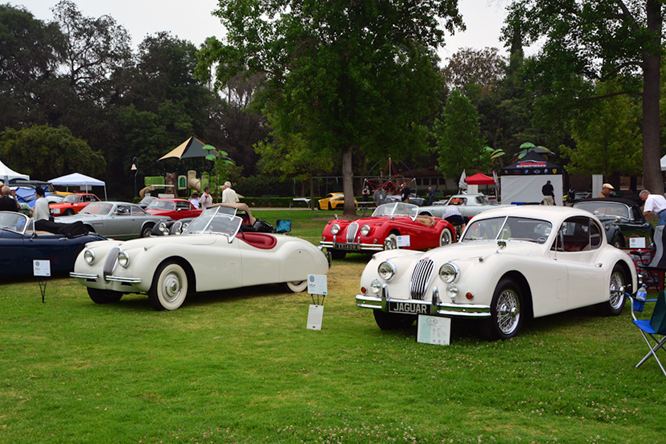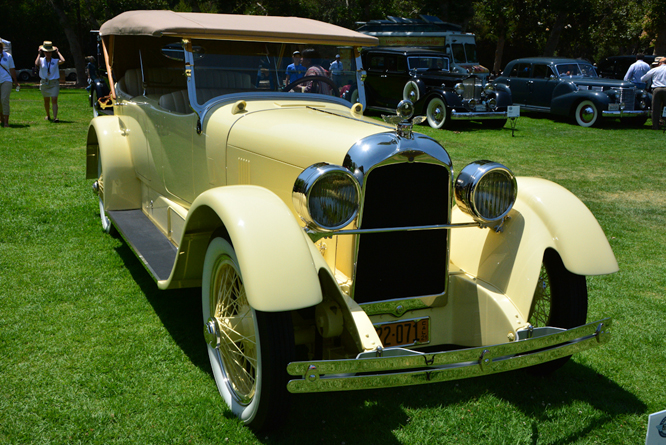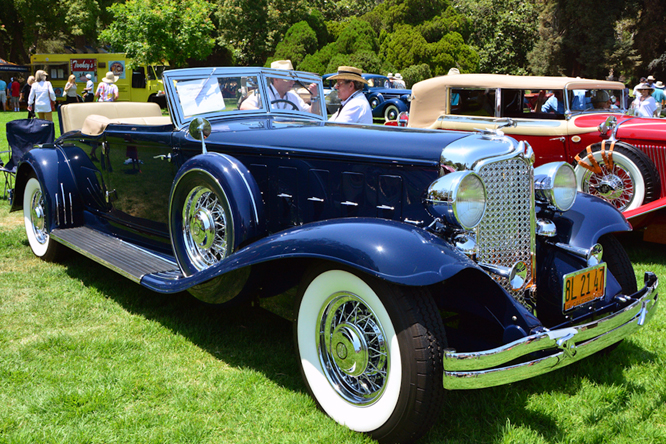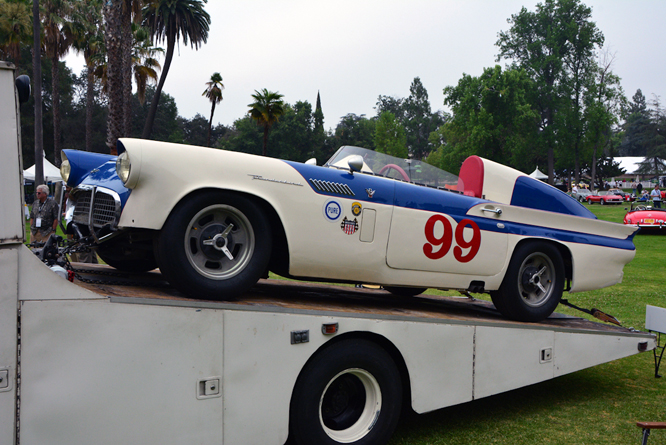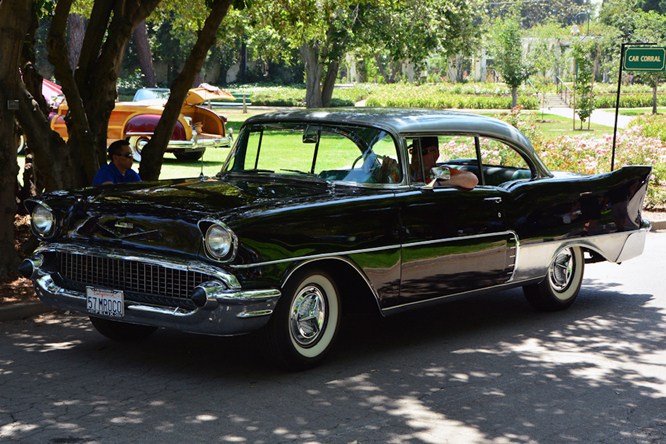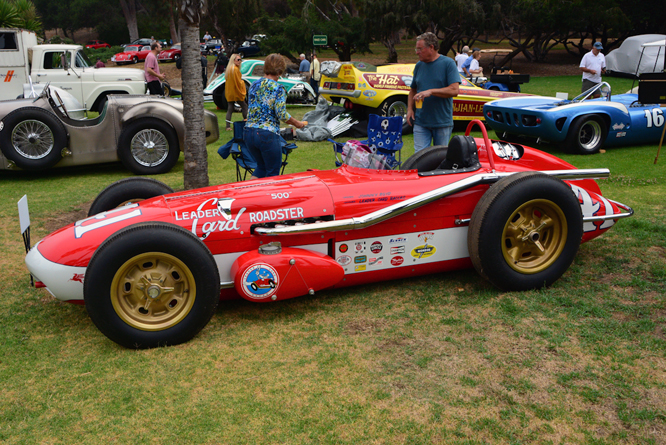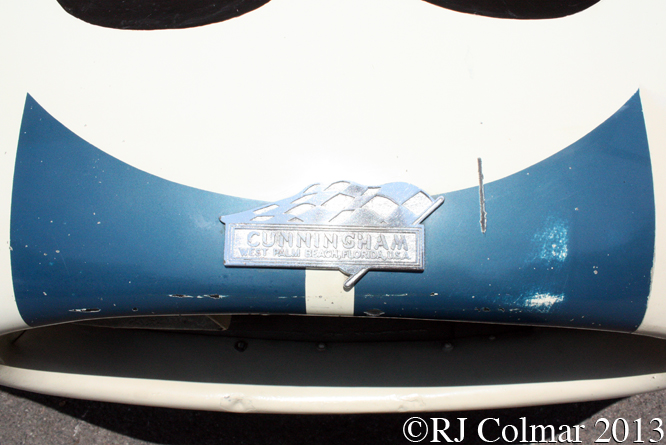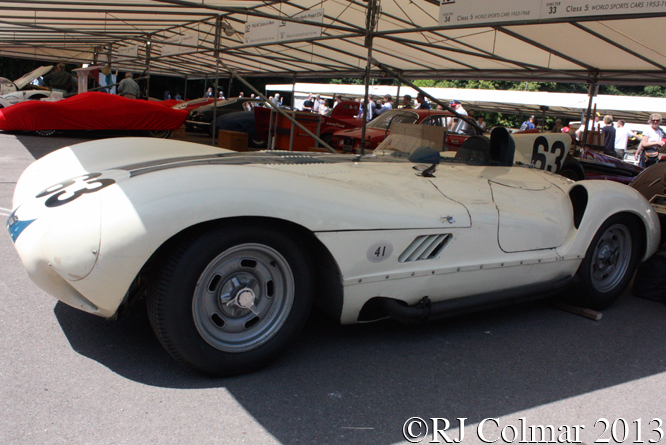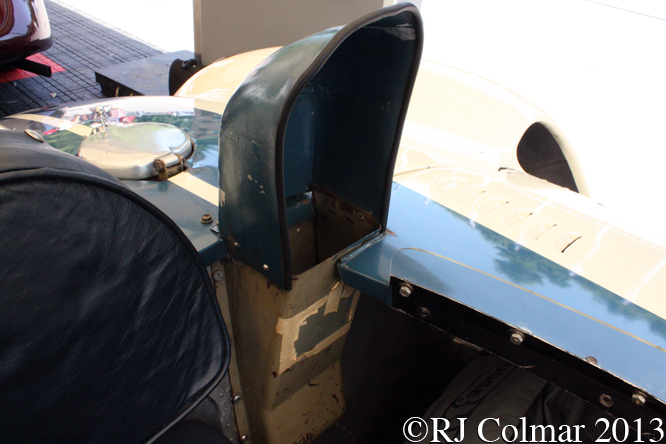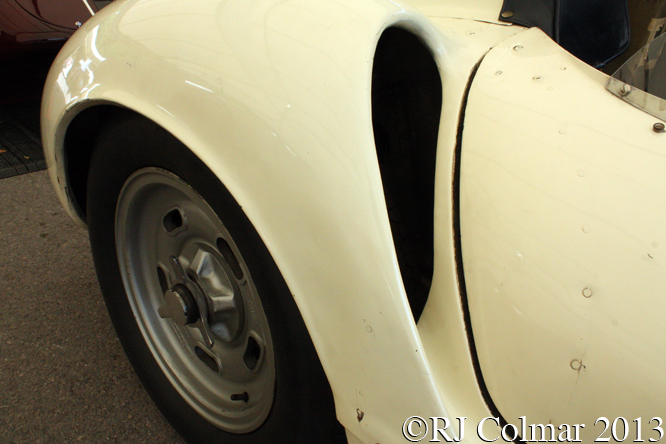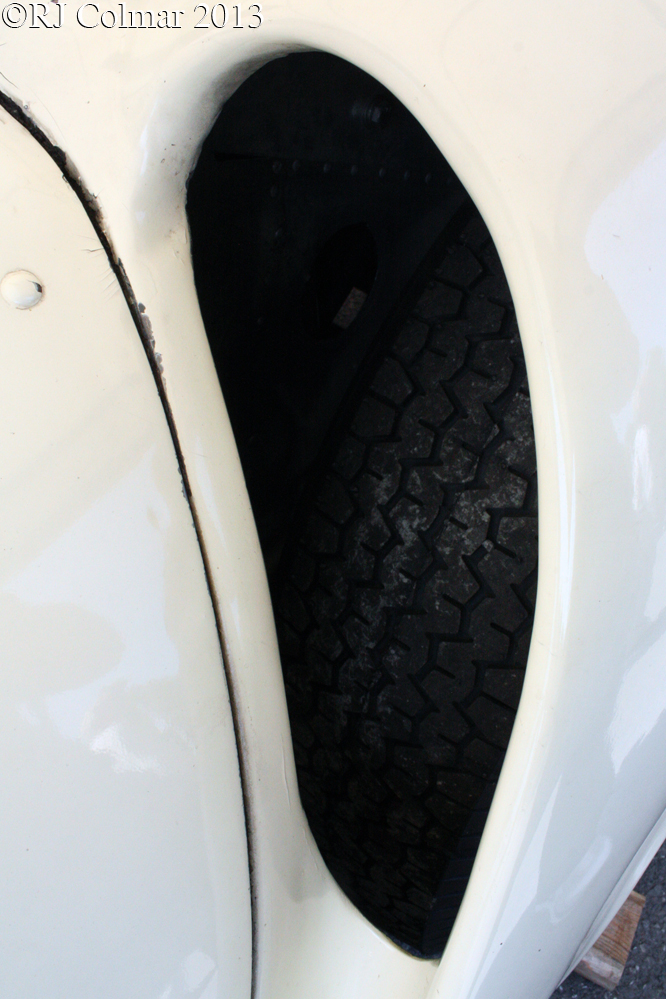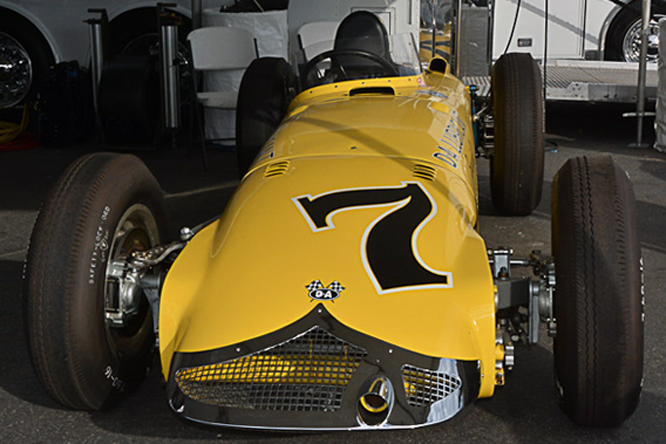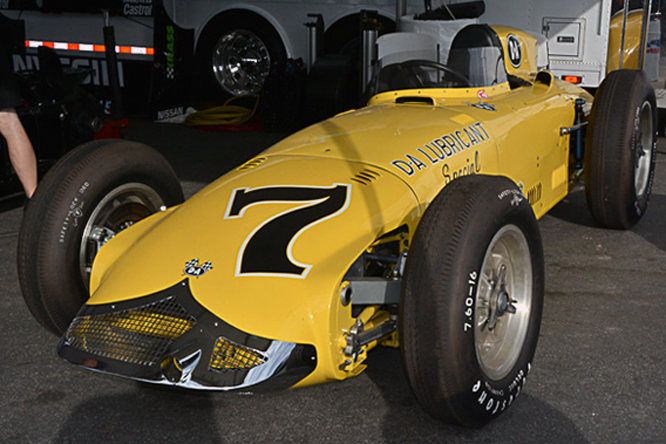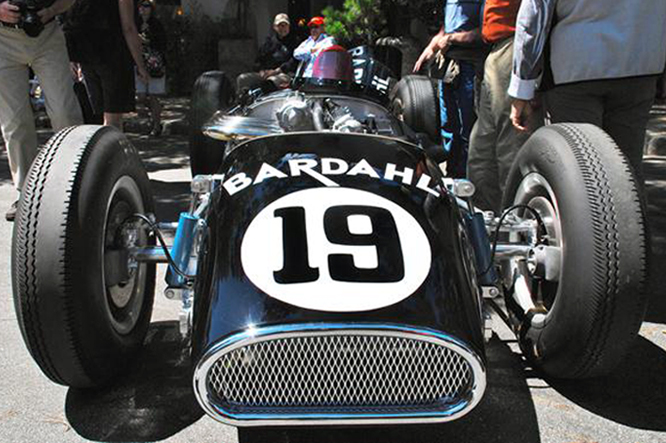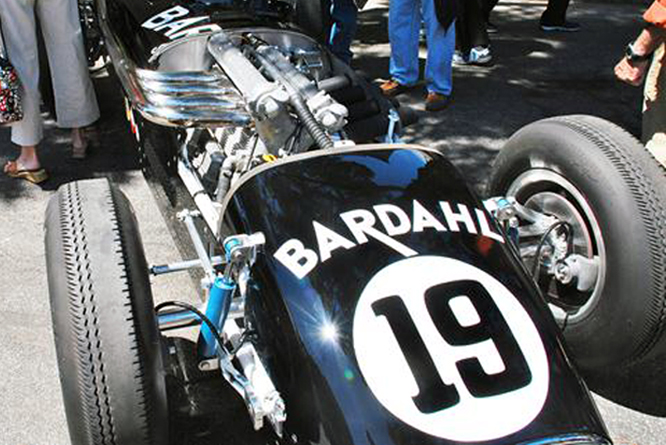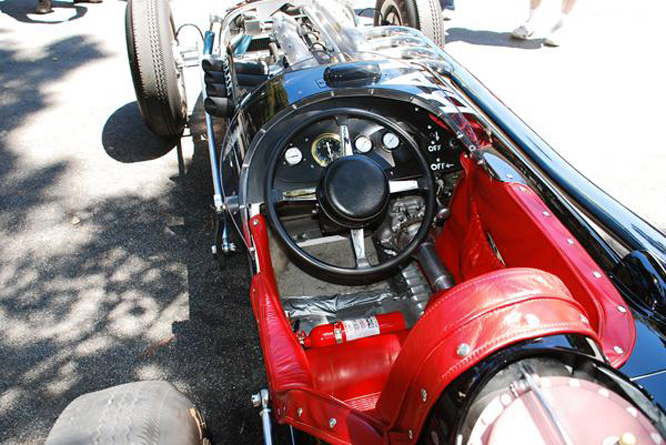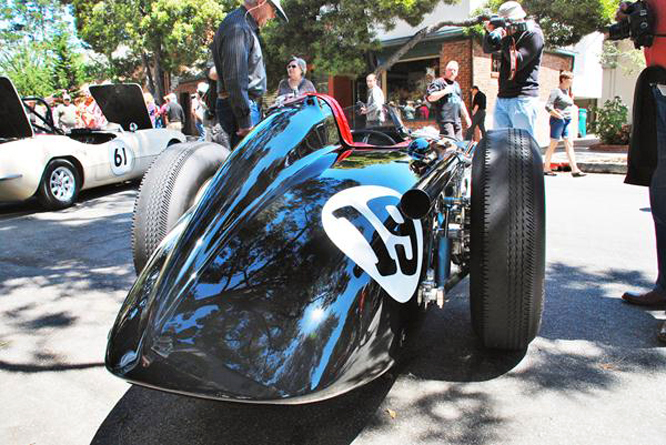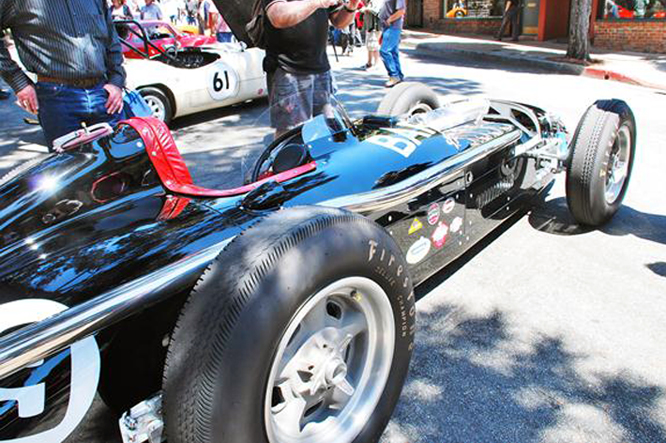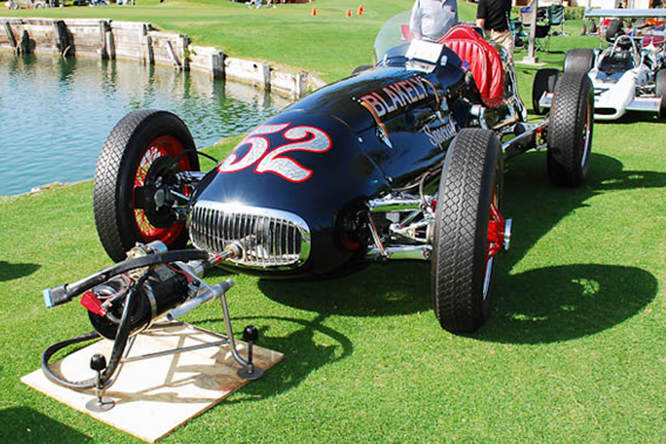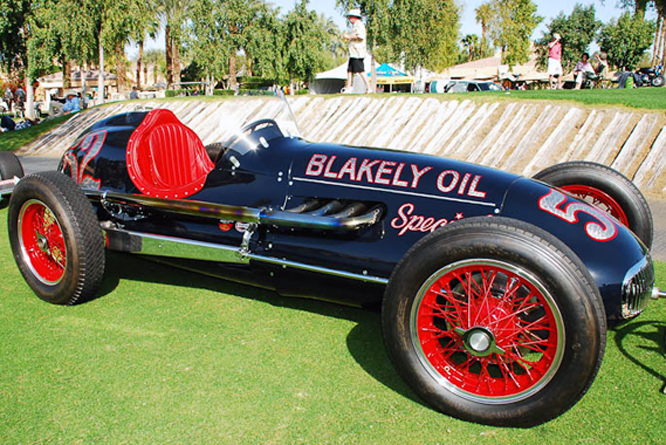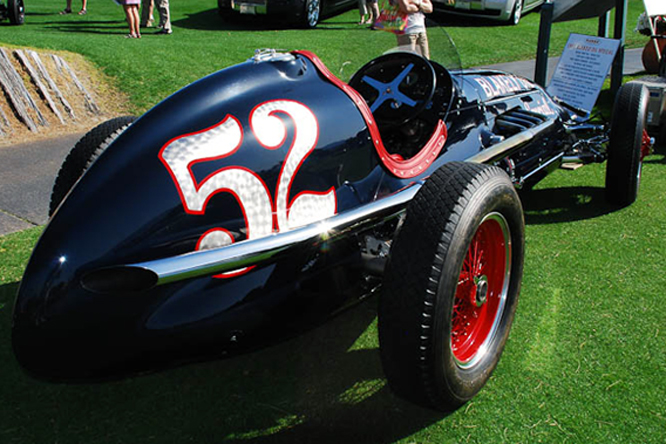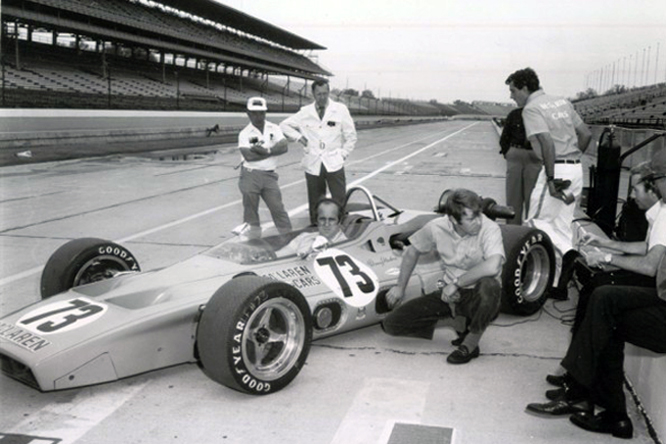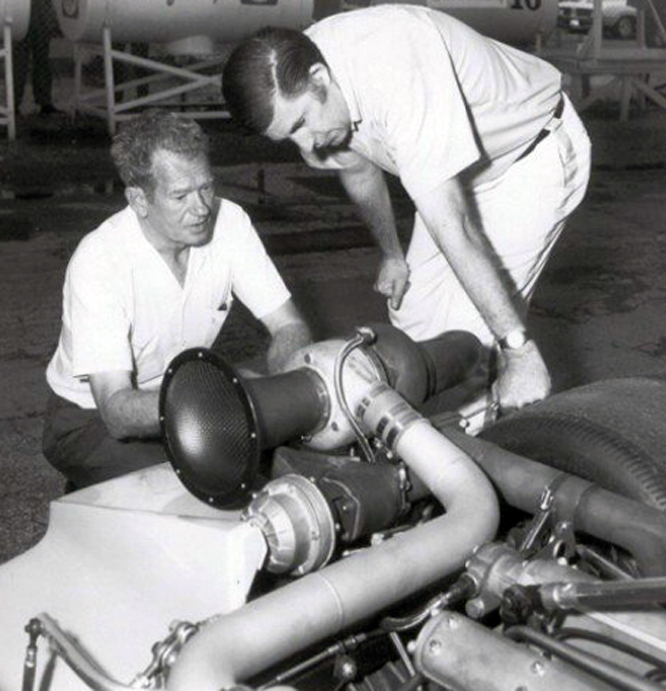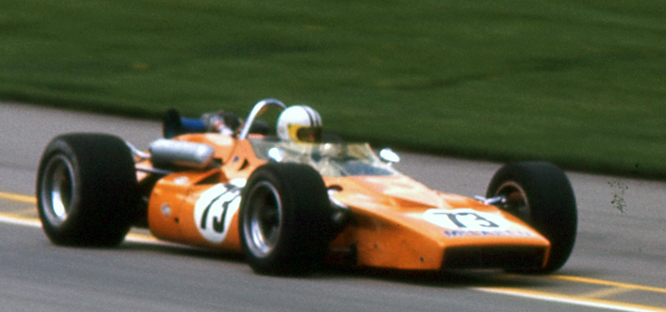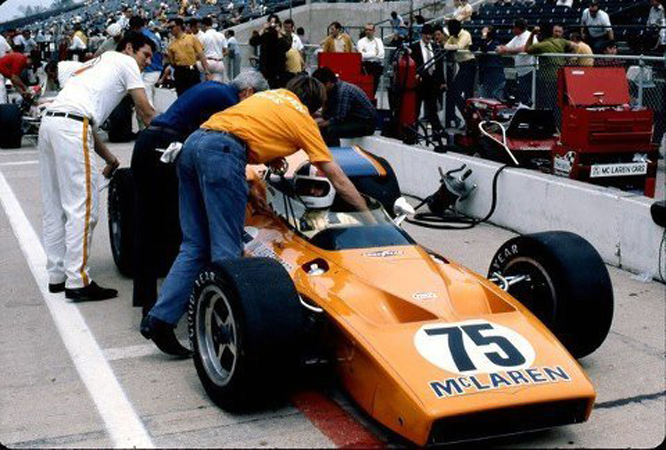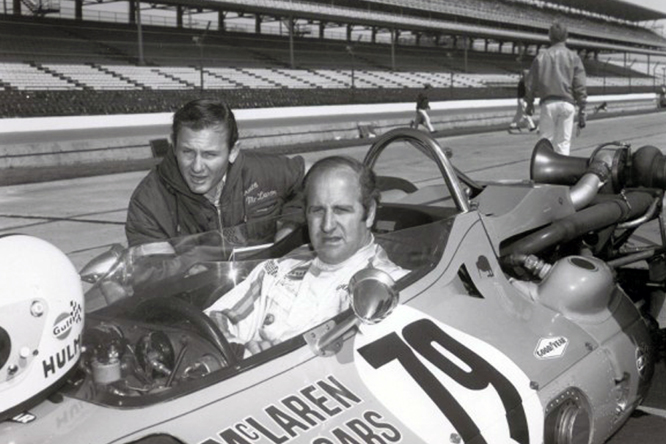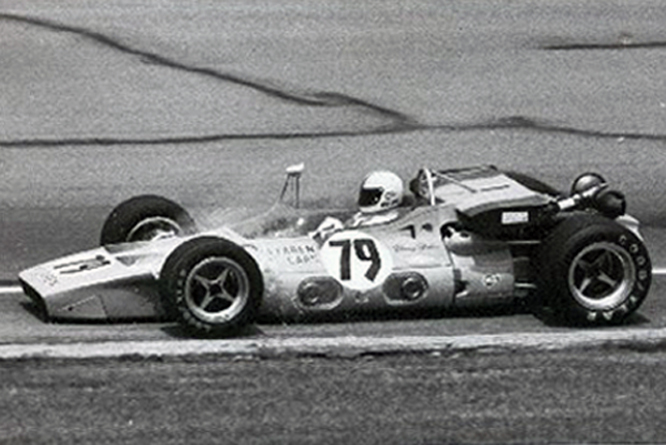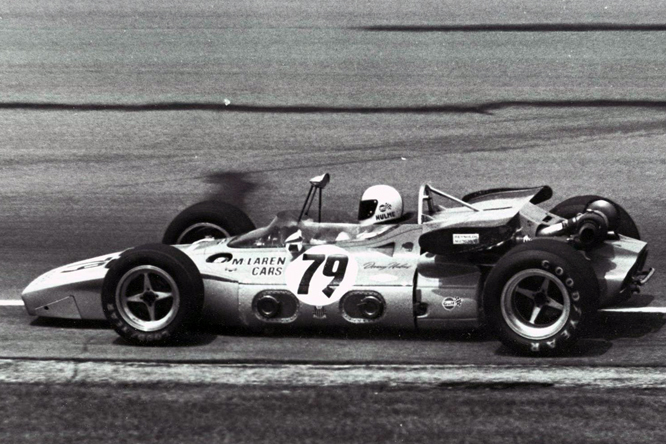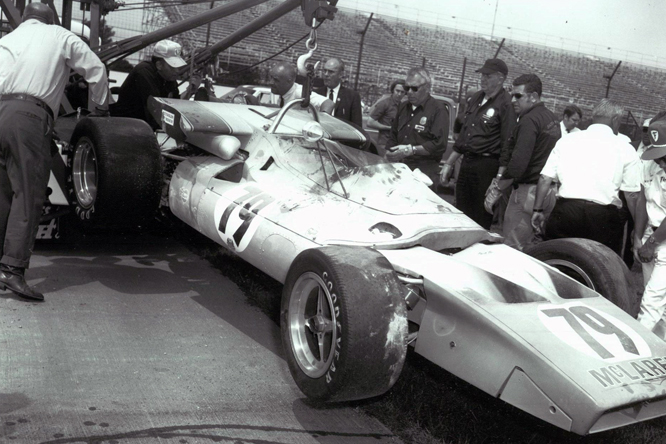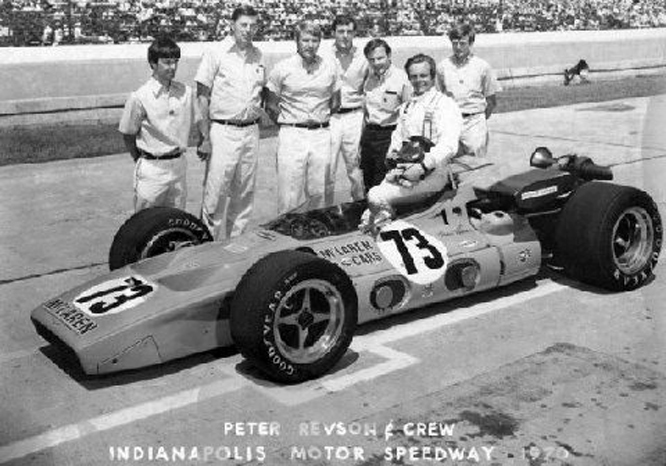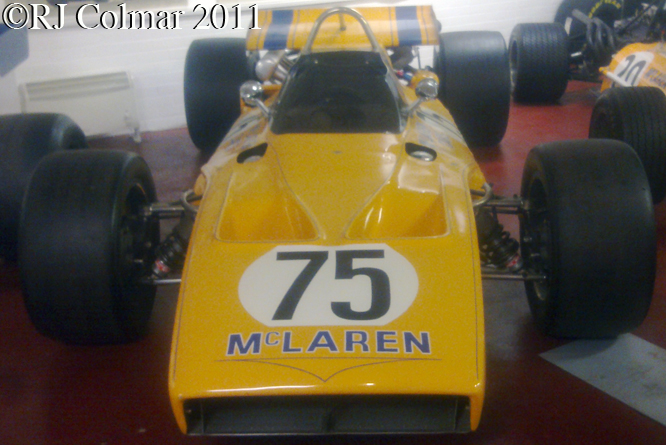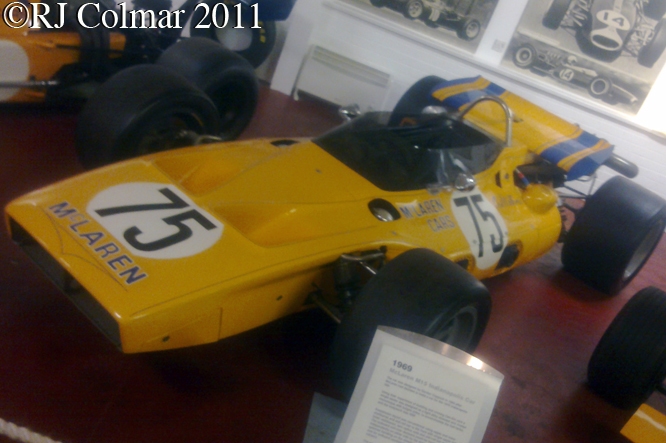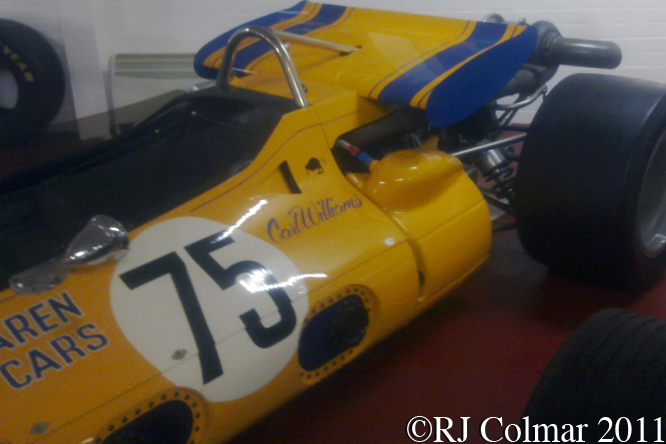May used to be the month where US open wheel racing was centered entirely on the story coming out of Indianapolis Motor Speedway, this month the iZod Indy Car Series breaks with tradition and will also be visiting Sao Paolo on May 6th, however GALPOT will be dedicating the next 5 Americana Thursday Posts to The Greatest Spectacle in Racing in years long gone by thanks to Geoffrey Horton who over the last two years has sent me numerous photo’s of Indy Cars from the Concours d’Elegance scene in California.
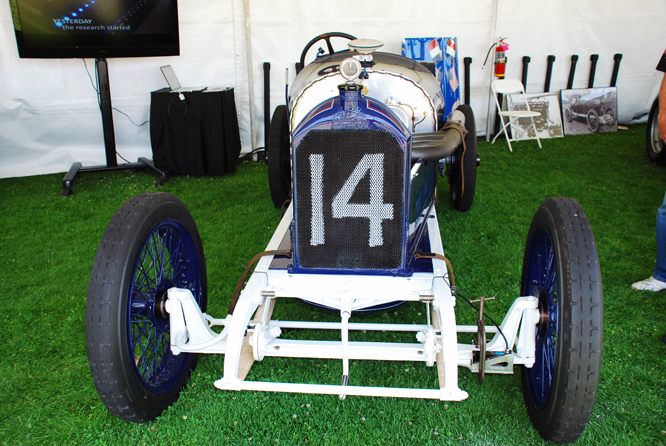
This months five part potted history of the Indy 500 returns to 1914 when, as I found out two years ago, rookie René Thomas went to victory lane driving Delage Y, I forgot to mention René was accompanied by riding mechanic Robert Laly.
Today’s featured car the #14 Peugeot EX4/L3 was also entered in the 4th running of the Indy 500 for another rookie called Arthur Duray and US riding mechanician Henry Mattheys by Jacques Menier a member of the French Menier Chocolatier dynasty.
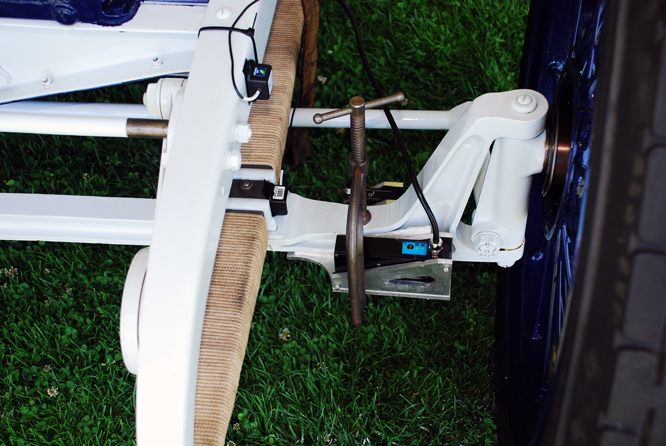
In 1914 qualification for the 500 was slightly different procedure from what we are familiar with today, in the first two editions of the Indy 500 qualification was by date the entries were received providing a minimum speed had been achieved over a measure mile of the circuit in 1911 and a full flying lap in 1912. For 1913 and 14 with the arrival of foreign competitors a qualifying lap with a minimum speed was compulsory but the grid positions were determined by blind draw.
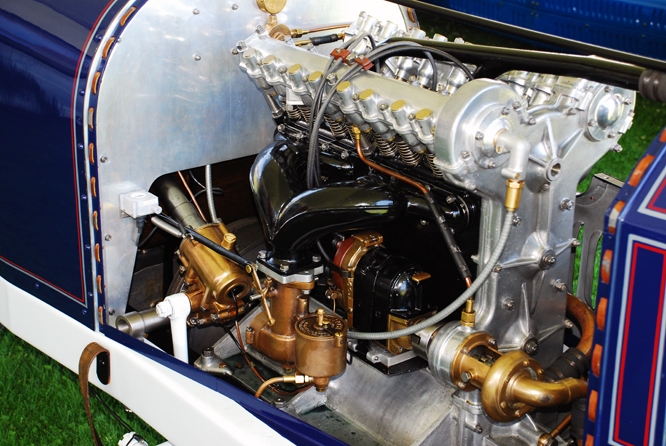
The Peugeot EX4/L3 that Jaques Menier bought featured an ‘L3’ 4 cylinder 3 litre / 183 cui version of the giant killing 7.6 litre / 463.78 L76 Motor that had successfully seen off the 15 litre / 915 cui FIAT’s in the 1912 French Grand Prix. Having proved with success the benefits of technical innovations that included twin gear driven overhead cams operating 4 valves per cylinder, which also featured the original hemi heads, designer Ernst Henry, aided by his driver engineers collectively known as “Les Charlatans”, proceeded to produce three further evolutions of of the motor with sizes of 5.6 litre / 341 cui, as used by Georges Boillot and riding mechanic Prévost to win their second consecutive French Grand Prix in 1913, 4.5 litre / 274 cui and the smallest of the family 3 litre / 183 cui L3 seen here.
For those interested in the minutiae of veteran era production methods there is a fascinating story regarding this particular motor whose block was found to have inconsistent longitudinal bore center lines on this thread on The Nostalgia Forum led by distinguished historian Doug Nye linked here.

Alongside the winning two car Delage team Arthur Duray faced two EX3/L56 powered Peugeots of Georges Boillot with a riding mechaninc M. Brevot who ‘might’ have been Boillot’s regular mechanic Prévost with 1913 rookie winners Jules Goux partnered by Emil Begin. Boillot set the fastest time in practice of 99.860 mph but the draw by ballot for grid slots saw Jean Chassagne’s Sunbeam start from pole.
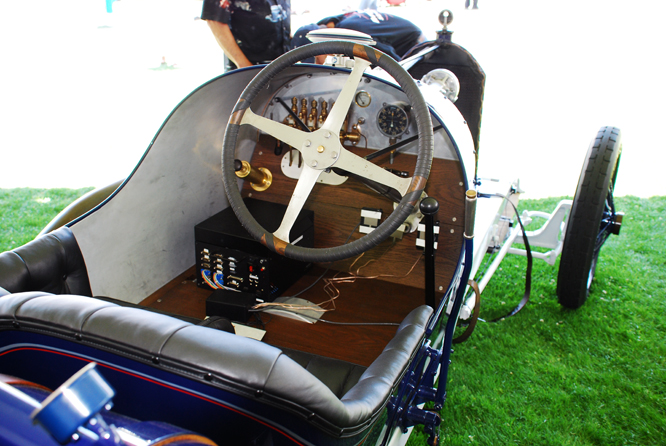
Boillot was in a comfortable position to win the 1914 Indy 500 until repeated tyre failures led to a 14th place finish while Goux in the second large Peugeot finished 4th with Duray coming home second to the Delage of René Thomas.
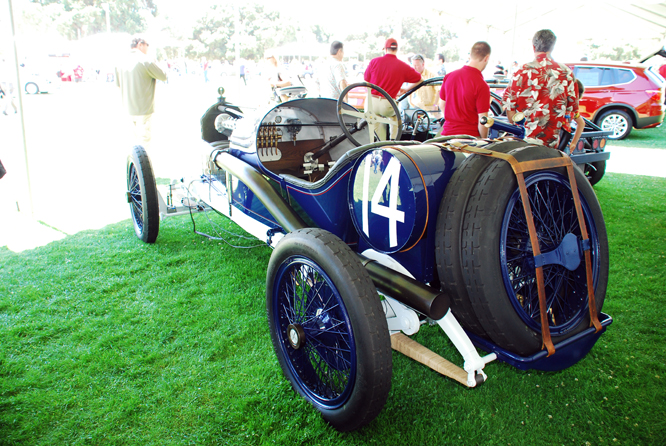
Arthur Duray who set three land speed records between 1903 and 1904 carried on racing until the 1930’s for manufacturers that included Hispano-Suiza, Ariès, B.N.C and Amilcar. At the 1921 French Grand Prix he was a spectator when running in second place Albert Guyot’s riding mechanic got hit on the head by a rock, Guyot pulled his Duesenberg up in the pits and it became apparent that his mechanic was too dazed to continue. On seeing this Arthur Duray is said to have vaulted the spectator fence pushed the mechanic aside cranked the Dusenbergs motor to life and jumped into the mechanics seat alongside Guyot who went on to record a sixth place finish.
The aforementioned Mr Nye has kindly informed me courtesy of Scott George at the Collier Collection, current owners of the vehicle, that “After its Indy days there is some suggestion it (today’s featured car) returned to France, plus a parallel suggestion that it stayed in the US. Sold to Harry Harkness who ran it a little in the north-eastern area, then sold to Kaufman, himself a New York Peugeot agent and team owner. The engine might have been “swapped out” of the chassis at some stage. Car then found at Benny Brandfon’s yard for old race cars and exotics in NY…”
Esteemed Indy historian Michael Ferner has expanded on what may have become of the car while in the care of Peugeot Dealer Alphonse Kaufman “The (#14) Meunier/Duray car, on the other hand, is a possible candidate for having served as the basis for the 1916 “Peusun Special”, apparently a Peugeot chassis with a Sunbeam engine and a Delage radiator!” If today’s featured EX4/L3 did form part of the Peusun Special this may tie up with Doug’s suggestion that the engine “might have been ‘swapped out’.”
Michael suggests James O’Keefes forthcoming book ‘Peugeot Racing In America (pre-WW II)’ should be a worthwhile read on the subject.
Harry Miller who had maintained and rebuilt a Peugeot L series motor copied the basic twin over head cam 4 valves per cylinder hemi head architecture for his own Miller motors that would come to dominate the Indy 500 in the 1920’s and 1930’s which would in turn be succeeded by “Offy” engines that former Miller employee Fred Offenhauser developed having bought the rights to the Miller motors when Miller went bust. The Offenhausers would remain competitive in ultimate turbocharged form at Indy until the mid 1970’s.
Of the 900 odd blogs I have posted to date this has without question proved one of the more challenging and I hope I have given an accurate summary of our knowledge of the car to date, my thanks to Doug Nye, Michael Ferner and Tim Murray, at The Nostalgia Forum and Scott George at the Collier Collection for their contributions to my understanding of the fascinating history of today’s featured Peugeot EX4/L3. Finally thanks to Geoffrey Horton without whose photographs their would have been no Peugeot EX4/L3 to blog about.
Thanks for joining me on this “Baby Hemi” edition of “Gettin’ a li’l psycho on tyres” I hope you will join me again tomorrow. Don’t forget to come back now !
03/05/13 PS Geoffrey has informed me the electrical equipment attached to the front axle was a sensor connected to a computer seen in the cockpit by students of the Revs Programme at Stanford University to examine the Peugeot’s dynamics in motion.
